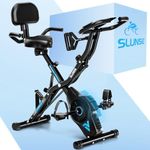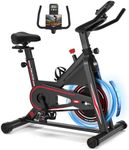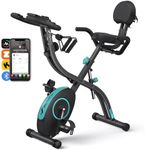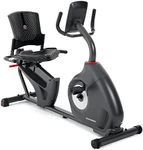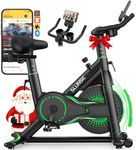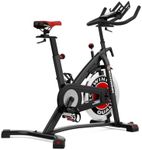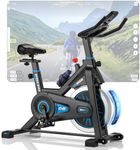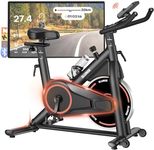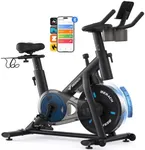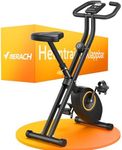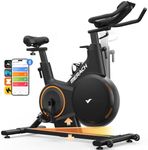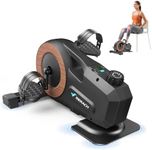Buying Guide for the Best Budget Exercise Bikes
Choosing the right budget exercise bike can be a great way to stay fit and healthy without breaking the bank. When selecting an exercise bike, it's important to consider several key specifications to ensure you get the best fit for your needs. Understanding these specs will help you make an informed decision and find a bike that suits your fitness goals, space, and comfort preferences.Type of Exercise BikeThere are three main types of exercise bikes: upright, recumbent, and indoor cycling (spin) bikes. Upright bikes are similar to traditional bicycles and are great for general cardio workouts. Recumbent bikes have a reclined seating position, providing more back support and comfort, making them ideal for people with back issues or those who prefer a more relaxed workout. Indoor cycling bikes are designed for high-intensity workouts and simulate outdoor cycling, making them perfect for serious cyclists or those looking for a more intense workout. Choose the type that aligns with your fitness goals and comfort preferences.
Resistance LevelsResistance levels determine how hard you have to pedal to keep the bike moving. This is important because it allows you to adjust the intensity of your workout. Exercise bikes typically offer magnetic, friction, or fan-based resistance. Magnetic resistance is quiet and smooth, making it ideal for home use. Friction resistance is usually found in more affordable models but can be noisier and require more maintenance. Fan-based resistance increases with your pedaling speed, providing a more dynamic workout. Consider your fitness level and the type of workouts you plan to do when choosing the resistance type and range.
AdjustabilityAdjustability refers to how much you can customize the bike to fit your body. This includes seat height, handlebar position, and sometimes even the seat angle. Proper adjustability is crucial for comfort and to prevent injury. If multiple people will be using the bike, look for a model with a wide range of adjustments to accommodate different heights and body types. Make sure the bike can be adjusted to fit you comfortably, allowing for a natural riding position.
Display and Console FeaturesThe display and console features on an exercise bike can enhance your workout experience by providing important information such as speed, distance, time, calories burned, and heart rate. Some bikes also offer pre-set workout programs, Bluetooth connectivity, and compatibility with fitness apps. While these features can be motivating and helpful, they are not essential for everyone. Decide which features are important to you based on your fitness goals and how you plan to track your progress.
Weight CapacityWeight capacity is the maximum user weight that the bike can safely support. This is important for ensuring the bike's durability and your safety. Most budget exercise bikes have a weight capacity ranging from 250 to 350 pounds. Choose a bike with a weight capacity that comfortably exceeds your body weight to ensure stability and longevity.
Footprint and PortabilityThe footprint refers to the amount of space the bike occupies. This is important if you have limited space in your home. Measure the area where you plan to place the bike and compare it to the bike's dimensions to ensure a good fit. Portability features, such as wheels for easy movement, can also be beneficial if you need to store the bike when not in use. Consider your available space and whether you need a bike that can be easily moved.
ComfortComfort is a key factor in ensuring you use your exercise bike regularly. This includes the seat, handlebars, and overall ergonomics of the bike. Look for a bike with a well-padded seat and comfortable handlebars. Some bikes offer additional features like adjustable seat angles or extra lumbar support. Test the bike if possible, or read reviews to get an idea of its comfort level. Choose a bike that you find comfortable to use for extended periods.
